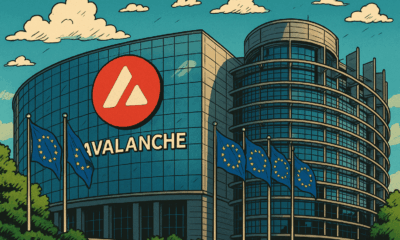Cardano
Towards a Transparent Future: Cardano’s Digital Product Passport Vision
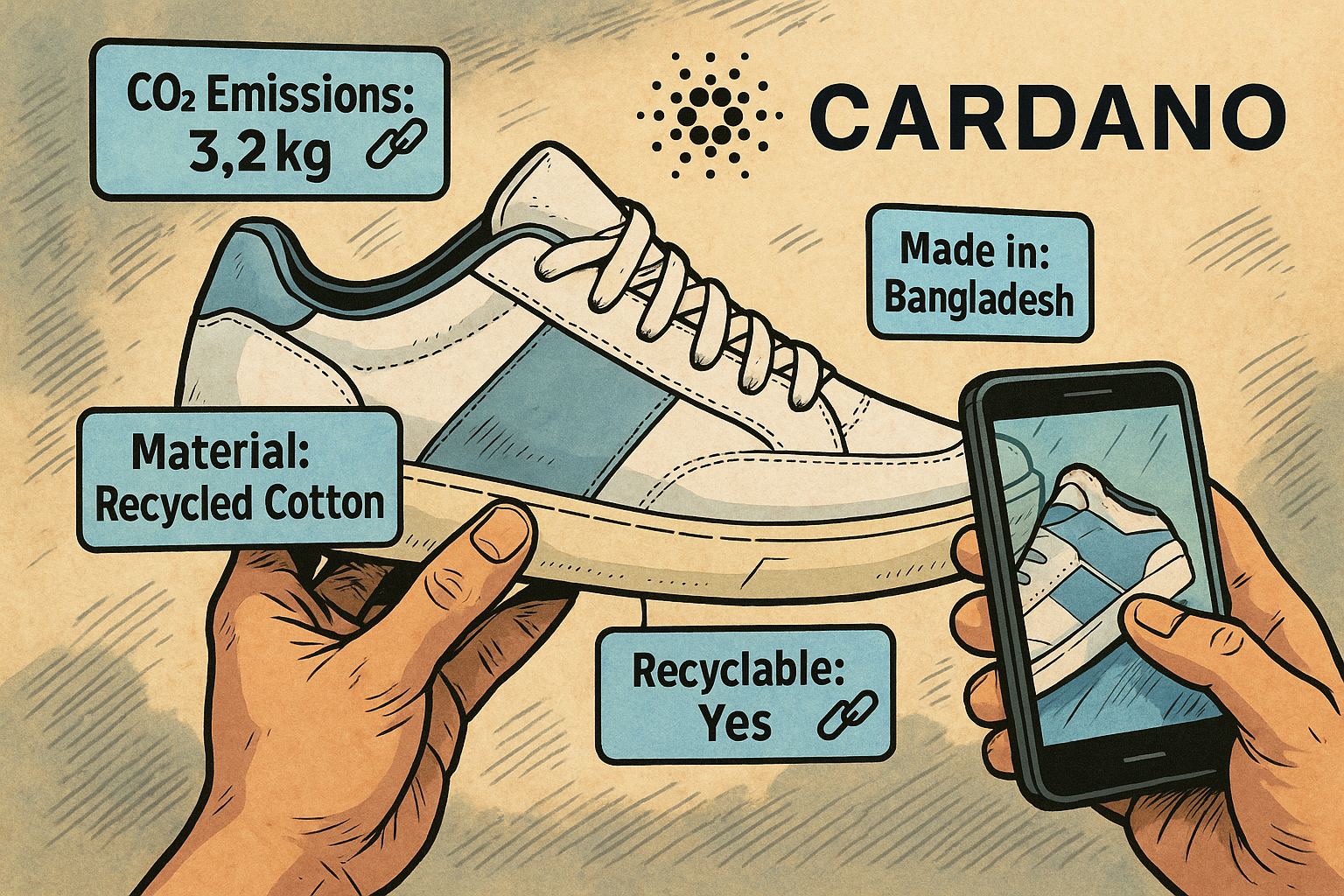
- Share
- Tweet /data/web/virtuals/383272/virtual/www/domains/theunhashed.com/wp-content/plugins/mvp-social-buttons/mvp-social-buttons.php on line 63
https://theunhashed.com/wp-content/uploads/2025/10/cardano_product_sneakers-1000x600.png&description=Towards a Transparent Future: Cardano’s Digital Product Passport Vision', 'pinterestShare', 'width=750,height=350'); return false;" title="Pin This Post">
When you buy a product today — an electric kettle, a smartphone, or even a pair of sneakers — how much do you truly know about its life story? Who made it, which materials went into it, how energy-intensive was its production, and what happens at its end-of-life? The Cardano Foundation’s Digital Product Passport (DPP) initiative attempts to answer exactly those questions — and in doing so, it charts a path toward a more sustainable, accountable, and traceable global economy.
The Seed of DPP: From Regulation to Innovation
The idea of a “digital product passport” is not merely a marketing gimmick; it emerges from specific regulatory demands. In 2024, the European Union adopted Regulation (EU) 2024/1781 (the Ecodesign for Sustainable Products Regulation, or ESPR), which essentially mandates manufacturers to provide rich, digital data about their products’ environmental and technical attributes. These passports are to be machine‑readable, open, and tied to unique product identifiers, enabling authorities, businesses, and eventually consumers to access verifiable data.
The regulatory impetus gives DPPs teeth. If companies want to sell in the EU, they must comply. But regulation alone does not ensure trust or integrity. That’s where blockchain and open data architectures come in. The Cardano Foundation positions the DPP as a solution anchored in on‑chain proofs, selective disclosure, and immutable audit trails — mechanisms meant to ensure that product data cannot be tampered with once recorded, while preserving sensitive or proprietary information.
Cardano emphasizes five pillars of the DPP system: data integrity (anchoring proofs to blockchain), record continuity (even through supplier changes), privacy‑respecting trust (only disclosing what’s needed), standard stack integration (fitting into existing ERP or PIM systems), and immutable audit trails (for compliance, recalls, or market surveillance).
The system is built to underpin compliance with ESPR, transparency in supply chains, and a shift toward circular economy logic.
Inside the Passport: What Gets Recorded?
A DPP is more than a barcode or QR code. Each product receives a unique identifier that links to its digital dossier — a standardized schema of attributes that could include repairability score, durability metrics, carbon footprint, materials breakdown, assembly instructions, and end-of-life treatment guidelines.
Importantly, the EU regulation envisions that data fields and access rights will be governed by delegated acts for individual product categories (e.g., electronics, textiles). Not all data is universally visible — the system supports “need‑to‑know” access and selective disclosure, preserving trade secrets or sensitive commercial data.
When deployed in supply chains, the passport can function as a traceability tool: each handoff, transformation, or transport leg can be recorded (or anchored) in an auditable trail. That trail can also help counter counterfeiting: brands or regulators can verify authenticity by checking whether the claimed passport for a product matches the immutable record.
Another key role is in waste management and recycling. Knowing exactly which materials and subcomponents went into a product—and how they were assembled—enables more efficient disassembly, reuse, and remanufacturing. The DPP also offers a structure for verifying ESG (environmental, social, governance) claims, giving brands a credible way to back up claims about circularity or emissions.
Positioning in the Blockchain Landscape
Why Cardano? The choice isn’t accidental. Cardano has positioned itself as a sustainable, Proof‑of‑Stake blockchain with relatively low energy consumption. Its architecture emphasizes formal verification, modular design, and a research‑driven approach — traits that lend credence to enterprise adoption prospects.
By anchoring DPP proofs to Cardano, the system inherits the blockchain’s immutability, decentralization, and resistance to tampering. Even if one party changes or disappears, the record remains anchored in the chain. Cardano’s ecosystem, with developer tools, identity layers, and enterprise support, becomes a backbone for DPP adoption. The Foundation envisions that integrating DPPs will not require discarding existing enterprise systems (e.g. ERP/PIM) — instead, DPPs act as an overlay, anchoring evidence while the core business systems persist.
In the broader blockchain arena, DPPs are not unique to Cardano. Other chains and consortia are exploring similar ideas (e.g. supply chain traceability, tokenized product dossiers). But Cardano’s push is distinguished by its alignment with EU regulation, its sustainability narrative, and its focus on compliance-grade architecture.
Why It Matters: From Consumers to Regulators
Empowering Informed Consumers
In a world drowning in “sustainability washing,” DPPs offer tangible, verifiable data at the point of purchase. A buyer could, for instance, scan a product’s identifier and see its repair score, carbon footprint, or materials history. That transparency gives weight to ethical consumer choices, rewarding brands that commit to sustainability.
Raising the Bar for Supply Chains
One of the chronic challenges in global manufacturing is opacity: multiple tiers of suppliers, subcontractors, recycling, and handling make accountability difficult. With DPPs, every node can (if desired) anchor data, making it harder to hide environmental malpractice, forced labor, or resource misuse. In turn, brands can better manage supplier risk and trace origin in case of recalls or defects.
Combating Counterfeiting
High-value goods — luxury goods, electronics, even medicines — are vulnerable to counterfeits. A unique, verifiable passport helps validate authenticity: a counterfeit product would either lack a correct passport or carry mismatched data. Regulators or even consumers could reject suspect products. The system’s immutability is key: once a passport is anchored, it should be infeasible to clone or falsify it without detection.
Accelerating Circular Economy
A major barrier to recycling or reuse is information absence: how to disassemble a product, which parts are hazardous, which materials are valuable. With DPPs encoding that data, recyclers and reverse‑logistics operators gain actionable instructions. The passport thus becomes a bridge between manufacturing and waste infrastructure, incentivizing reuse and remanufacturing over disposal.
Regulatory Compliance as a Business Driver
Because DPPs are rooted in regulation (ESPR), they aren’t optional add-ons — they become necessary for market access. Companies unwilling or unable to adopt them risk exclusion from EU markets. But compliance can be a competitive asset, signaling commitment to transparency. For industries like electronics, textiles, or automotive, early adoption may yield first-mover reputational gains.
Challenges and Caveats
The vision is inspiring, but real-world adoption is fraught with challenges.
First, data standardization is difficult. Assigning uniform schemas across product types—and convincing manufacturers to conform—requires governance, coordination, and domain expertise.
Second, data quality and honesty still depend on upstream participants. If a supplier lies or fudges data before anchoring, the blockchain cannot detect falsehoods; it only secures the record once written. Ensuring veracity demands audits, incentives, or third-party attestations.
Third, cost and complexity are nontrivial. Embedding DPPs into legacy systems, training teams, integrating with supply chains, and scaling the ingestion of data across millions of units is a heavy lift. For smaller firms, the overhead may seem daunting.
Fourth, privacy and commercial secrecy must be balanced carefully. Some product information is proprietary (e.g. formulation, component sourcing). The selective disclosure model helps, but designing it right to prevent leakage while satisfying transparency is subtle.
Fifth, global interoperability is key. Products often cross jurisdictions; a DPP scheme needs to mesh with non-EU regulations or similar frameworks globally. If multiple “passport” systems emerge, fragmentation may weaken value.
Finally, consumer adoption is always uncertain. For mass adoption, the DPP interface must be simple, seamless, and embedded (e.g. via shopping apps or QR code readers) rather than requiring technical savvy.
Estimating Potential Impact
In a best‑case scenario, DPPs could transform supply chains and consumer markets over the next decade. Several indicators suggest substantial upside:
If a critical mass of brands adopt DPPs (for example, major electronics manufacturers, clothing labels, or automotive players), the system could become a de facto standard for sustainability reporting. That would ripple across suppliers, forcing even small-tier firms to comply.
Consumer behavior could shift: given clear, comparable sustainability data, buying decisions might increasingly favor products with high repairability, low carbon footprint, or circular design. That in turn pressures producers to prioritize sustainable design over planned obsolescence.
Regulators may lean harder into enforcement: with reliable digital records, compliance auditing becomes more automated and efficient. Noncompliance becomes easier to detect, and fines or sanctions become credible threats.
Beyond environmental impact, DPPs could catalyze new business models: resale, remanufacture, product-as-a-service, or circular leasing all benefit from verifiable histories. A smartphone with a full passport is easier to refurbish, resell, or lease.
If Cardano’s solution gains traction, the chain stands to benefit significantly: more enterprise usage, more integration, more network effect. The DPP could become one of the flagship real-world applications driving blockchain adoption beyond speculative use.
Yet, realistically, the transformation is incremental. I’d estimate that within five years, a few major product verticals (electronics, appliances, perhaps textiles) may adopt DPPs at scale in Europe. Within ten years, the concept could spread globally, becoming an industry norm. But many firms will drag their feet, and interoperability, standards, and trust mechanisms will take time to mature.
Final Thoughts
Cardano’s Digital Product Passport is an ambitious convergence of regulation, sustainability, and blockchain technology. It offers a credible means to turn abstract ESG claims into verifiable data, and to tether consumer decisions and supply chains to accountability. The regulatory tailwinds from the EU make it more than aspirational — it may become a necessity.
The biggest test will be adoption. If major brands, recyclers, and regulators all commit, DPPs could become the digital DNA of products, unlocking traceability, circularity, and consumer agency. If adoption remains niche, it risks becoming another blockchain promise with limited real-world punch.
Still, the very act of bridging compliance markets with decentralized infrastructure is noteworthy. In a world drowning in green claims and opaque supply chains, the Digital Product Passport is a bold bet on transparency — and on blockchain’s role in shaping a more sustainable future.
Cardano
Solana co‑founder publicly backs Cardano — signaling rare cross‑chain respect after 2025 chain‑split recovery
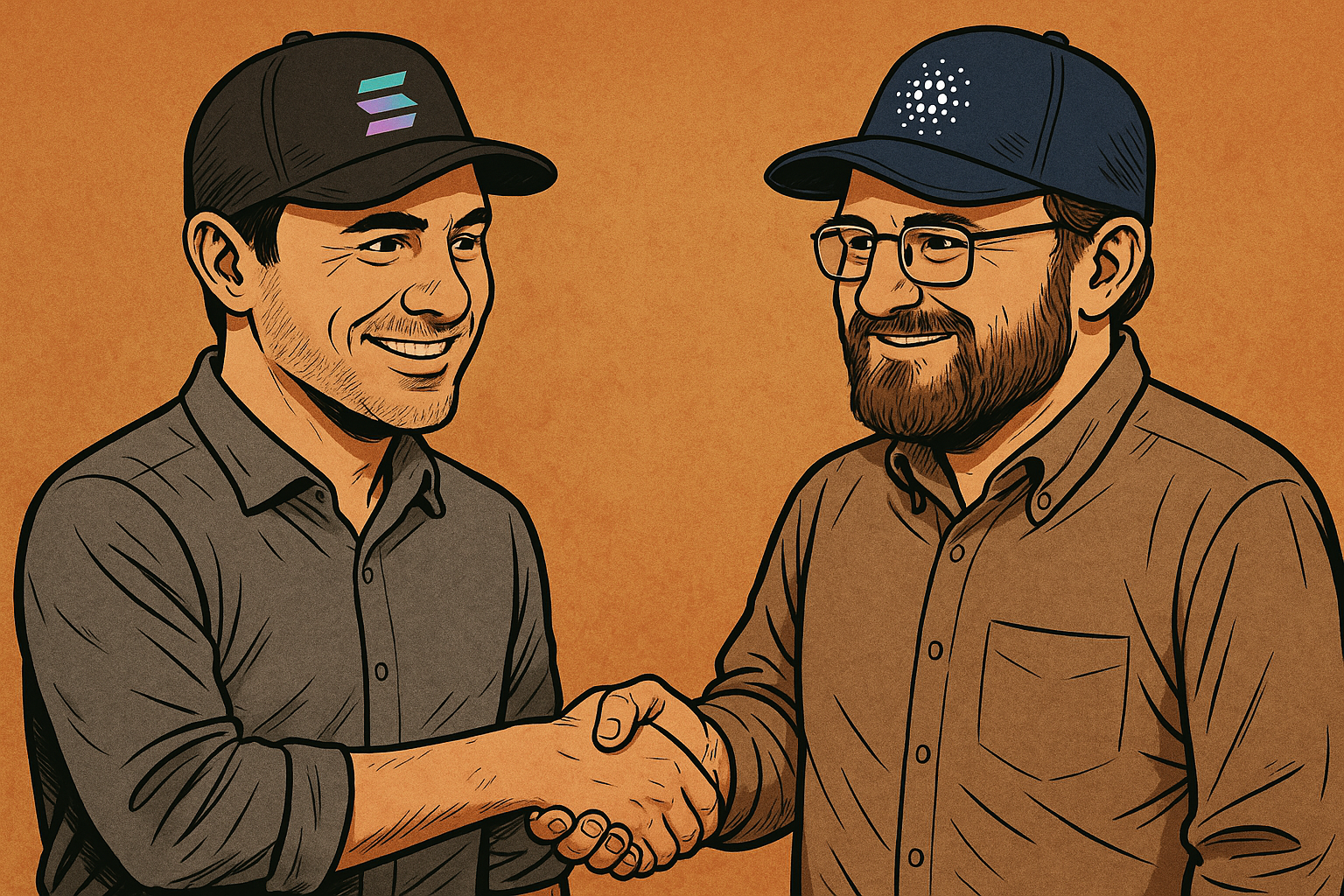
From Incident to Validation
In a development that surprised many in the blockchain world, Solana co-founder Anatoly Yakovenko publicly praised Cardano following its recent chain-split incident. What could have been a blow to Cardano’s reputation instead became an unexpected moment of validation — not just from within its own ecosystem, but from one of its most prominent rivals.
The Split That Wasn’t a Stop
On November 21, 2025, Cardano experienced a technical divergence caused by a malformed transaction. The issue stemmed from a bug in the serialization and deserialization logic of its node software — a deep protocol-level vulnerability. Some nodes processed the transaction as valid, while others rejected it, resulting in two competing forks of the blockchain running simultaneously.
But here’s the critical part: Cardano never stopped. The Ouroboros consensus mechanism kept producing blocks on both forks. And once the problem was identified, developers rapidly issued a patch. Stake pool operators upgraded their nodes in a matter of hours, and the network converged back onto a single canonical chain — no hard fork, no downtime, no loss of funds.
Yakovenko’s Unexpected Endorsement
Shortly after the incident, Solana’s Anatoly Yakovenko weighed in with a surprising take. He acknowledged that creating a Nakamoto-style consensus without relying on energy-intensive Proof-of-Work is “extremely hard to build” — and concluded that Cardano “actually nailed it.” He called the network’s recovery after the split “pretty cool.”
This kind of comment matters. It wasn’t just a technical compliment — it was a recognition from a competitor that Cardano’s foundational architecture, often criticized for being slow-moving or overly academic, delivered exactly what a blockchain is supposed to do: it kept running, adapted, and healed itself.
The Design Behind the Recovery
Cardano’s recovery didn’t happen by luck. It’s the product of years of research-first development: a layered architecture, formal verification, and the Ouroboros consensus engine designed specifically to prioritize security and resilience.
Most importantly, the resolution didn’t depend on a central authority stepping in. The “honest chain” prevailed through natural consensus. Operators coordinated globally without coercion. The update rollout was swift. The split was resolved without user impact beyond brief transaction slowdowns.
These are not small feats in a decentralized environment. They represent the kind of maturity that few chains — even large ones — have demonstrated under live pressure.
A Rare Signal in Crypto Culture
What makes this moment especially significant is that it cuts through the tribalism that usually defines blockchain communities. Yakovenko didn’t take a victory lap or criticize a competitor. Instead, he acknowledged a technical achievement — one that aligns, at least in spirit, with the broader mission of blockchain: decentralized systems that can withstand failure and continue operating trustlessly.
This is a sign that the blockchain space may be maturing. Cross-chain respect, while rare, is important. It suggests a shared understanding that competition shouldn’t come at the cost of ignoring good engineering when it happens — even on another protocol.
Reframing the Narrative Around Cardano
For Cardano, the incident — and the way it was handled — may redefine public perception. The network has long been portrayed as overly cautious, academic, or “too slow to ship.” But when put to the test, those same qualities may have enabled it to respond to a complex failure without chaos.
Cardano wasn’t flawless. But when failure came, it was recoverable. And that’s the real benchmark for a network that claims to be decentralized and secure. It didn’t just protect funds. It protected trust.
Final Thought
The blockchain space has seen its share of crises: bridges exploited, blockchains halted, forks forced under pressure. But Cardano’s chain split will likely be remembered not as a breakdown — but as a breakthrough. It showed that resilience in Proof-of-Stake is not only possible, but provable. And with respect coming even from Solana’s top leadership, it’s clear that Cardano’s architecture — often underestimated — is earning its place among the most battle-ready networks in the industry.
Cardano
Cardano Has Never Stopped — What the Chain Split Really Tells Us About Its Tech
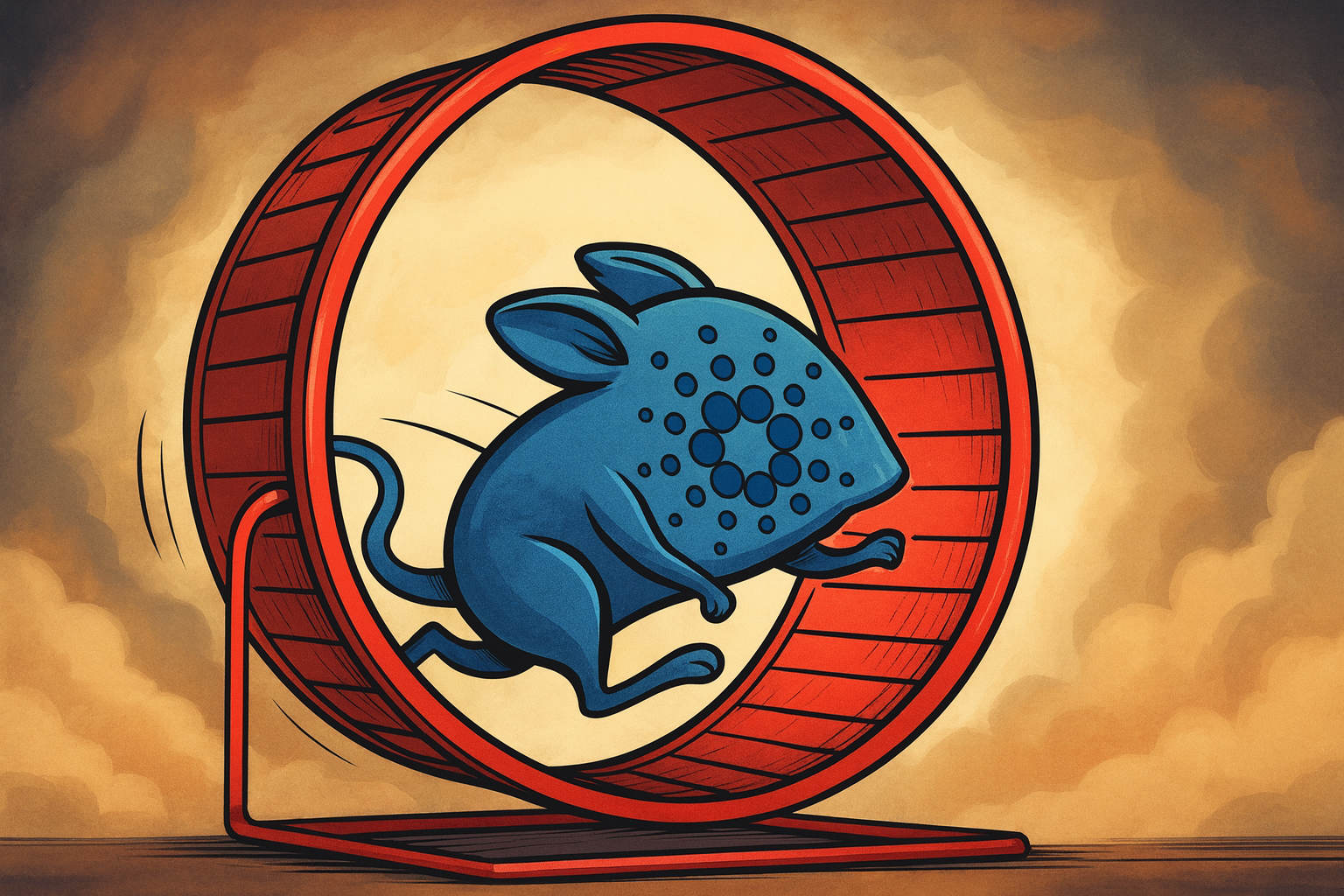
The Network Didn’t Fail. It Proved Itself.
On November 21, 2025, Cardano experienced what some feared might be a catastrophic event: a chain split. For about 14 hours, parts of the network diverged, with two versions of the blockchain running in parallel. But despite the panic and technical confusion, the result was clear—Cardano didn’t stop. The chain kept producing blocks, the network kept running, and the community coordinated a fix in real time. Far from exposing a flaw, the incident demonstrated just how solid Cardano’s architecture really is.
What Actually Happened: A Bug Meets an Edge Case
The chain split began when a malformed delegation transaction—created by an operator using AI-generated code—triggered a rarely encountered bug. The bug, which had been dormant in Cardano’s core software library since 2022, involved a discrepancy in how nodes processed transaction data during serialization and deserialization.
When this malformed transaction entered the network, some nodes interpreted it as valid while others rejected it. As a result, certain stake pool operators began building blocks on a forked version of the chain. This led to a temporary split: two incompatible chains running simultaneously.
Crucially, this was not a network halt. Cardano’s Ouroboros consensus algorithm continued to function. Blocks were still produced. Most users didn’t even notice the split until infrastructure like explorers, wallets, and exchanges began reporting inconsistencies. Transaction delays increased and around 3.3% of pending transactions were lost in the fork that was eventually discarded—but the underlying blockchain logic kept moving forward.
How Cardano Healed Itself
The recovery process was swift and decentralized. Core developers issued a patch to reject the malformed transaction type. Stake pool operators across the world upgraded quickly, voluntarily aligning with the correct version of the chain. No hard fork was required. No rollback or centralized intervention was needed. The protocol and the people around it did exactly what they were designed to do.
This recovery wasn’t just about code—it was about coordination. Cardano’s structure relies on a globally distributed group of node operators who can act independently but coherently. In this case, their rapid consensus allowed the network to self-correct in less than a day.
Why This Makes Cardano Stronger
Resilient systems aren’t the ones that never break. They’re the ones that recover quickly and accurately when they do. That’s exactly what happened here. Cardano faced a serious test, and it passed with its ledger intact and its community mobilized.
Rather than damage confidence, the event served as a validation of Cardano’s layered design and governance philosophy. It showed that even rare and difficult-to-detect bugs can be addressed within the existing framework. It also demonstrated that decentralization, when well organized, can outperform centralized systems in resilience.
Interestingly, even competitors took notice. The CEO of Solana—often seen as Cardano’s rival—publicly praised Cardano’s approach, acknowledging its strength in areas like formal verification and decentralized recovery. Such recognition from outside the ecosystem adds weight to the idea that Cardano’s fundamentals remain among the most robust in the space.
What It Means for Developers, Users, and Investors
For developers, the incident highlights the importance of safety in smart contract deployment. It also underscores the value of Cardano’s conservative, peer-reviewed approach to protocol changes. While some may criticize its pace, the trade-off for stability and recoverability is now clearer than ever.
For users, the key takeaway is trust. The network didn’t stop. Their funds remained safe. Their transactions, for the most part, were processed normally. And even when things went wrong, the fix didn’t rely on centralized authority—it relied on code and cooperation.
For investors, it signals maturity. Cardano didn’t implode. It didn’t require emergency governance. It didn’t pause block production. It endured, adapted, and continued. That’s more than can be said for many other blockchains in moments of crisis.
Final Word: Recovery Is Strength
Cardano’s chain split wasn’t a failure. It was a demonstration. It showed that robust protocol design, backed by a coordinated global community, can overcome unforeseen problems without permanent damage. No blockchain is immune to bugs—but few can claim they’ve weathered one this gracefully.
In a space where narratives often swing between hype and fear, the message from Cardano is simple and steady: even under pressure, Cardano has never stopped.
Cardano
Cardano Faces First‑Major Chain Split; Charles Hoskinson Involves FBI After Developer’s Experiment
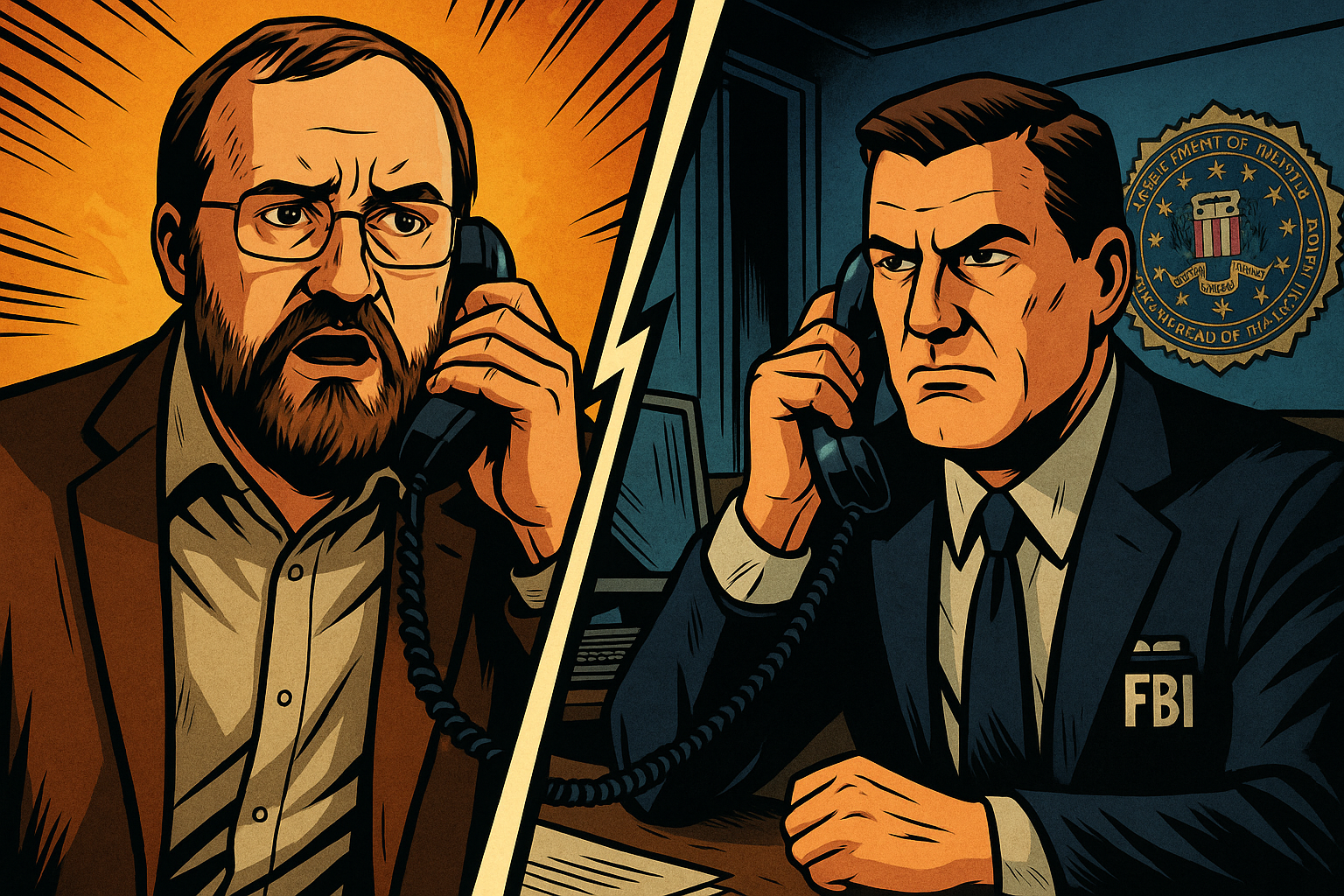
The blockchain world was shaken when Cardano suffered a temporary yet dramatic chain split on November 21, caused by a malformed delegation transaction that exploited a bug dating back to 2022. The culprit, a staking‑pool operator working under the alias “Homer J.,” later admitted the incident began as a personal challenge — he tried to reproduce a “bad transaction,” used AI‑generated instructions and inadvertently triggered a divergence in ledger history.
What happened on the chain
The split emerged when a delegation transaction passed validation in older node versions but was rejected by newer one, causing network nodes to diverge into two incompatible chains. Block production never stopped, yet exchanges paused operations amid the confusion. Emergency patches were deployed within three hours and the system converged back to a single chain by the next day. No user funds are reported lost so far.
Hoskinson’s response and legal implications
Charles Hoskinson described the incident as a “premeditated attack” rather than a simple error and confirmed that the U.S. Federal Bureau of Investigation is investigating the matter. He asserted that the operator “knows the FBI is already involved.” Meanwhile an employee of IOHK, Cardano’s lead development organisation, publicly resigned citing concerns about future legal consequences for development mistakes.
Market and ecosystem impact
In the immediate aftermath the native token ADA dropped by as much as 16 percent before stabilising. The broader narrative now hinges on governance trust, code‑audit rigour and the growing risk that even mature proof‑of‑stake networks can be shaken by obscure legacy bugs. The debate encapsulates one of crypto’s defining tensions: decentralisation versus operational risk.
What to monitor next
Attention will focus on whether Cardano can restore stakeholder confidence and sharpen its node‑software deployment processes. Will staking‑pool‑operators upgrade swiftly to the patched version? Will governance transparency improve? Also, regulators may begin paying closer attention to blockchain network incidents being treated as cyber‑attacks. And for ADA holders and developers, the key question remains whether network resilience can outpace reputational damage.
-

 Cardano2 months ago
Cardano2 months agoCardano Breaks Ground in India: Trivolve Tech Launches Blockchain Forensic System on Mainnet
-

 Cardano2 months ago
Cardano2 months agoCardano Reboots: What the Foundation’s New Roadmap Means for the Blockchain Race
-

 Cardano2 days ago
Cardano2 days agoSolana co‑founder publicly backs Cardano — signaling rare cross‑chain respect after 2025 chain‑split recovery
-

 Bitcoin2 months ago
Bitcoin2 months agoQuantum Timebomb: Is Bitcoin’s Foundation About to Crack?
-

 Cardano2 months ago
Cardano2 months agoAfter the Smoke Clears: Cardano, Vouchers, and the Vindication of Charles Hoskinson
-

 Cardano2 months ago
Cardano2 months agoMidnight and Google Cloud Join Forces to Power Privacy‑First Blockchain Infrastructure
-

 Ripple2 months ago
Ripple2 months agoRipple CTO David “JoelKatz” Schwartz to Step Down by Year’s End, but Will Remain on Board
-

 News2 months ago
News2 months agoRipple’s DeFi Awakening: How mXRP Is Redefining the Role of XRP


